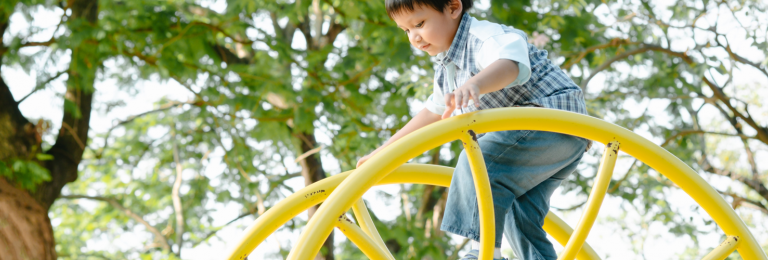Risk versus hazard
Understanding the distinctions between risk and hazard can help us guide how children can engage in play and the parameters that we set around their experiences. Knowing the differences between a risk and a hazard allows us to use our knowledge of the children in our setting, and the individual and unique ability level they all possess, to provide meaningful play experiences that can develop risk management, decision making and problem solving skills.
What is a risk?
Risk is defined as the challenges and uncertainties within an environment that a child can recognize and learn to manage by choosing to encounter them while determining their own limits. Using this definition we can understand that engaging with risk is the choice of the child, where they formulate a decision based on their previous experiences, confidence level and perceived ability to overcome the risk.
What is a hazard?
A hazard can be defined as a danger in the environment that could seriously injure or endanger a child and is beyond the child’s capacity to recognize. Adults have a responsibility to know what may be in the environment that could cause a serious injury to a child that the child themself is unable to recognize. This may be a broken slide with sharp edges, or a rotten branch in a tree.
It is important to understand that a risk and hazard for each individual will also change as they grow, mature and develop skills to mitigate challenges within the environment. Something that a child may see as a risk initially may become much less of a risk as they continually engage with that situation and become more confident. Likewise, what may be a hazard for a 2 year old may not be a hazard for a 5 year old as they have developed more skills to assess the situation and understand what may cause them injury or harm.
For more information on the distinctions between risk and hazard, please see this information sheet from the Canadian Public Health Association.
